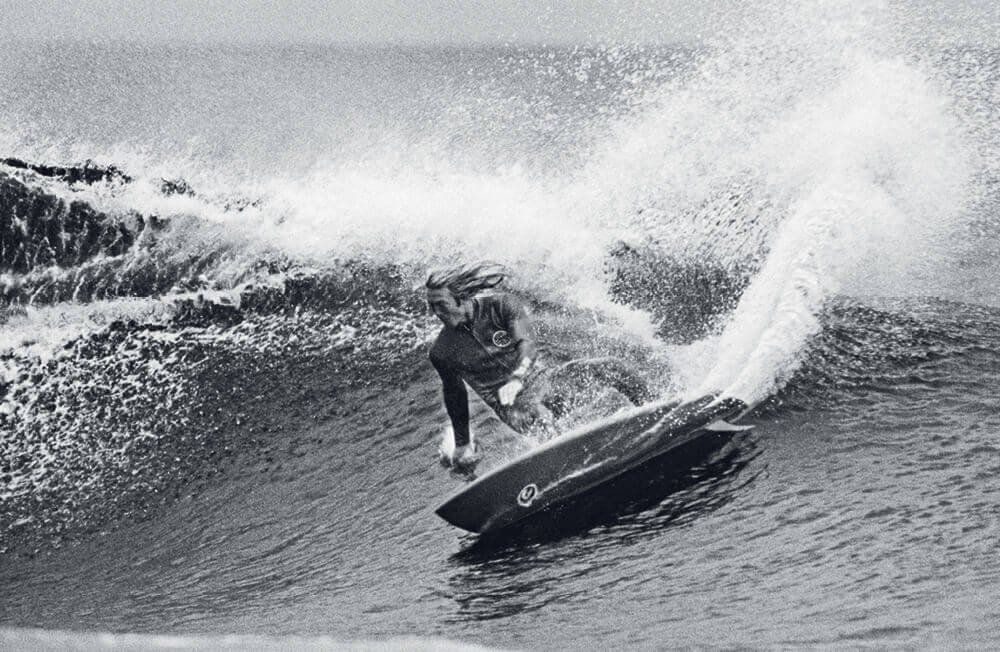The 12 Best Surf Novels That You Haven’t Read Yet
Story by Jake Dean
Sure, Instagram has all the fancy ladies, and the clothes, and the fancy creams and lotions. But the reading life is good! Really good! You get to wake up every morning, at 5am, and make some soup, then read a book! It’s the best. You’ll love it. You get to lay in a bed, all by yourself, for the rest of your life! That’s fantastic! Go. Go away. Read some books…
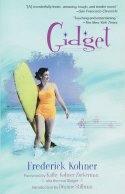
Gidget, by Frederick Kohner (1957)
Long before Sabre Norris inspired a nation of tween rippers, it was Gidget – a fictional 15-year-old from Malibu – who captured the minds of girls around the world. The story behind Gidget is neat. Kohner, a Czechoslovakian Jew screenwriter, bailed on Nazi Germany in the 1930s (a wise move) for California, where his daughter Kathy became drawn to the ocean and the region’s burgeoning surf scene. Frothing on her keenness for the strange culture, which was largely considered boys-only, Kohner distilled her experiences into a coming-of-age novel about Franzie (aka Gidget), who’s taken under the wing of local boys as she rebels against the status quo to become a surfer dammit! It’s worth a read if you’re a youngster, or if you want a glimpse into how surfing went mainstream. Just don’t think too much about Kohner’s descriptions of boobs and teenage lust, considering the main character’s based on his daughter.
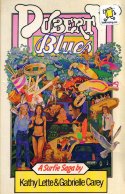 Puberty Blues, by Gabrielle Carey & Kathy Lette (1979)
Puberty Blues, by Gabrielle Carey & Kathy Lette (1979)
An Aussie classic! Puberty Blues is narrated by 13-year-old Debbie, who describes life and the harsh truths of growing up by the coast in The Shire (Sydney) during the 1970s. A sign of the times, Debbie and best mate Sue are expected to wait patiently on the beach or fetch food while their boyfriends do all the surfing. Puberty Blues deals with some hectic themes for a teen coming-of-age tale – gang-rape, heroin, miscarriage – and despite its brevity, it’ll leave you thinking about how far we’ve come when it comes to sexism in Oz – and how far we’ve still got to go. If you haven’t read it yet, best get on to this important piece of Australian literary history, ya slack-arse moll. Best read in a panel van while wiping your Chiko Roll-greased fingers on your straight-leg Levis.
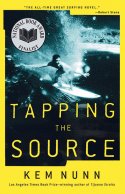 Tapping the Source, by Kem Nunn (1984)
Tapping the Source, by Kem Nunn (1984)
Californian Kem Nunn’s 1984 classic surf-noir follows Ike Tucker, a scrawny teen from land-locked bumfuck, USA, who discovers that his beloved sister might’ve got in with the wrong crowd and been murdered. He heads to the debauched Huntington Beach in search of answers, finding violent surfers, satanic death cults, Vietnam vet bikies, drug lords and teen love. He also becomes addicted to getting shacked off his melon. It’s a dark and gritty – dare I say it, coming-of-age – tale that inspired the making of Point Break and a slew of similar surf-crime novels. It’s a doozy. From the back cover: “Ike looks into the shadows and finds parties that drift towards pointless violence, joyless vacations and highs you might never come down from.” Almost sounds like a book on the ASP Tour’s Euro leg in the 90s, huh (zing!)
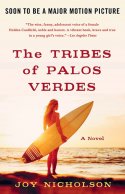 The Tribes of Palos Verdes, by Joy Nicholson (1998)
The Tribes of Palos Verdes, by Joy Nicholson (1998)
The Tribes of Palos Verdes follows a dysfunctional family that moves to the affluent suburb of Palos Verdes, LA. Our hero is Medina Mason, a teenager who’s forced to deal with family breakdown, her neurotic mother, an absent and philandering father, angst, bullying, teenage sex and her brother’s struggle with heroin. Medina turns to surfing to keep the darkness from consuming her – something all of us can relate to on some level. A movie based on the young adult fiction, starring Jennifer Garner, is coming out soon, so smash the book first so you can smugly tell everyone how you were on to it before it was cool.
 Rhino Chasers, by Neil Grant (2002)
Rhino Chasers, by Neil Grant (2002)
A trip across the bottom of Oz is a rite of passage for any surfer looking to test their mettle, and it’s the premise for Glaswegian-turned-Aussie Neil Grant’s first book. Eighteen-year-old Goog and his two best mates have just finished school, so they cram into a Kingswood and hit the road, encountering all the shit you associate with the dirty south – submarine-sized sharks, gnarly locals and heavy tubes – as well as a few neo-Nazis, tragedy and a weird mescaline-toting hitchhiker for good measure. Grant admitted in an interview that he basically had no idea how to structure a novel when he wrote this, but it works because of the spontaneity it injects into the trip. Read it if you want inspo to tackle one of the world’s rawest surfing frontiers for the first time, or if you’re keen to reminisce on the wild glory days of your youth.
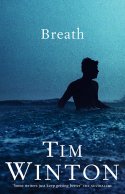 Breath, by Tim Winton (2008)
Breath, by Tim Winton (2008)
Written by one of Australia’s favourite and most critically-acclaimed authors, Breath won a swag of prizes including the illustrious Miles Franklin. Your mum, seven of your mates and Cheryl from accounting have all read this book. Bruce “Pikelet” Pike is the narrator, and he takes us back to his adolescence in a sleepy West Oz town, where him and his best mate Loonie start surfing to escape the mundanity of small-town life. They’re soon taken under the wing of a mysto local charger, the hulking and bearded Sando, who pushes the boys to their limits, which reverberates for years to come. It’s a must-read, obviously, with the only gripe being that the main slab the trio chases is called “The Nautilus”. Who the fuck names a wave The Nautilus? I would’ve called it Chazzwazzas.
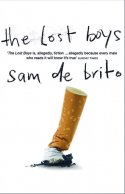 The Lost Boys, by Sam de Brito (2008)
The Lost Boys, by Sam de Brito (2008)
The Lost Boys follows Ned Jelli and his transformation (or lack thereof) from a 15-year-old who spends his time with mates getting stoned, trying to root chicks and surfing Maroubra, to a 35-year-old who spends his time snorting coke, trying to root chicks and surfing Bondi. The question de Brito poses is – what happens when men lose their way and find life has passed them by? You might find this a tad too depressing (exploring rosy topics such as alcoholism, suicide, etc.) or frustrating because Ned doesn’t seem to develop despite his relatively privileged upbringing. Or you might nod along gravely with each paragraph as you take a long hard long at yourself. Sadly de Brito died suddenly in 2015, which makes his reflections on making the most of one’s life even more pertinent.
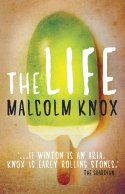 The Life, by Malcolm Knox (2011)
The Life, by Malcolm Knox (2011)
Award-winning Aussie journo and novelist bigwig Malcolm Knox turned his pen to surfing in 2011, chronicling the life of fictional Dennis Keith. Known as DK, the world champ is now a drug-riddled, bloated and paranoid shell, holed up in his mum’s Gold Coast retirement village unit, shuffling to the shops each day for a Pine Lime Splice. Sound familiar? Upon publication, veteran surf writer Tim Baker questioned the extent that Knox “borrowed” from Michael Peterson’s life and a few of surfing’s other luminaries (e.g. Occy & Rabbit) to craft his story. So take Knox’s “fictional” liberties with a grain of Coolangatta salt, but ethical questions aside, give it a go because the man can fucking write.
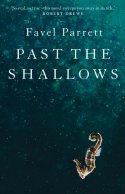 Past the Shallows, by Favel Parrett (2011)
Past the Shallows, by Favel Parrett (2011)
Look, surfing’s not exactly front-and-centre in this novel – which is based along Tassie’s wild and rugged South Coast – but its elegant descriptions of the sea and its power are well worth your time. Harry, Miles and Joe are three brothers trying to navigate life with their bitter and alcoholic abalone-fishing father after the death of their mum. Harry, the youngest and most sensitive, is terrified of the ocean, while the older two fellas use surfing as an escape from their impoverished life. It’s a story about the omnipotent power of the ocean (its ability to provide salvation and wrath in equal measure), survival and of brotherly love. If you’re wanting an edge-of-your-seat thriller, give this one a miss. But if you’re into beautiful prose and feeling the feels, it’s well worth your time. I’m not crying, you’re crying.
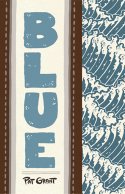 Blue, by Pat Grant (2012)
Blue, by Pat Grant (2012)
Grant’s inspiration to create this graphic novel was a chance swim at Cronulla in 2005 – the day of the race riots. A hardened middle-aged gent named Christian picks up the tale, reminiscing on his youth – with best mates Muck and Verne – in the working-class town of Bolton. He ruminates on the days before the “blue people” – mysterious tentacled aliens – arrived, and the negative effects he reckons they’ve had on the town, its industry and culture. It’s a simple yet searing look at racism and nationalism, told through the foul-mouthed school-wagging trio’s search for a dead body, said to be laying on some train tracks (it has a strong Stand By Me vibe). It’s beautifully-drawn – featuring some of the most drool-worthy pits you’ll see in ink – and following the novel there’s an insightful essay on Australian surf comic history, featuring Captain Goodvibes, Gonad Man and all your other old friends.
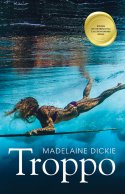 Troppo, by Madelaine Dickie (2016)
Troppo, by Madelaine Dickie (2016)
We’ve all met our fair share of spuds giving Aussies a bad name in Indo, but the surf camp owner in Dickie’s tension-laden novel is nek level. Penny is a twenty-something from Perth, who heads to Sumatra to take a dream job and to escape the claustrophobia of city life and a flatlining relationship. She’s soon forced to confront the quickly escalating hostility from locals towards the enigmatic Aussie surf camp owner, Shane; the possibility there’s black magic afoot; perfect uncrowded slabs; and the sometimes dark reality of being a surfer and the only woman on the beach abroad. It’s a classic tale of two cultures colliding, and of working out what the hell you wanna do for the rest of your life during your twenties. If you’ve spent any time in Indo you’ll lap up this page-turner.
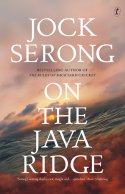 On the Java Ridge, by Jock Serong (2017)
On the Java Ridge, by Jock Serong (2017)
You probably recognise Jock’s name from these here pages, but what you might not know is the Vico surf scribe is now a critically-acclaimed novelist. While his first two books were gripping crime fiction, On the Java Ridge is a literary political thriller, tackling the thorny issue of asylum seekers, with an Indo surf-trip boat full of pit-hungry Aussies making up much of the novel’s cast. Caught in a storm, the tourists are faced with another boat filled with asylum seekers such as nine-year-old Roya, her mum and unborn sister, who are fleeing persecution for the safe shores of Australia. Oh, and the latter’s boat is sinking. It’s deftly written, packed with twists, turns and fleshed out characters, and it might just make you think a bit deeper about asylum seekers and the us-versus-them mentality that pervades your TV screen. Much recommend.
[shopify embed_type=”product” shop=”coastalwatch-book-shop.myshopify.com” product_handle=”new-surfing-world-issue-393″ show=”all”]
